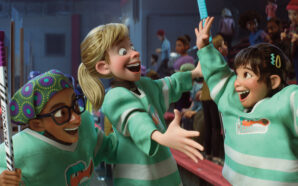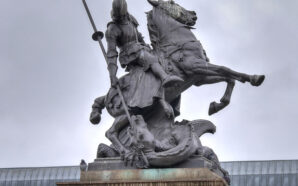The person in charge of brining the live-action “Beauty and the Beast” let’s us into his experience
Arturo Hilario
El Observador
Bill Condon is known as the man behind such films as the “Twilight Saga”, “Chicago” and “Dreamgirls”. This year his work on Disney’s reimagined live-action “Beauty and the Beast” will be seen by countless fans of the original 1991 film as well as new audiences of the story of a castle full of living household furnishings, their furry and menacing owner, and the musical numbers that accompany it.
Condon had some time to speak on certain aspects of the film, including why he feels it was made, what the challenges were in bringing it to life, and why IMAX is great in breathing iconic scenes with new life.
For you, what was your goal in bringing this film to Disney to be reimagined in live-action?
I think first of all, to live up to it, what was so great about the original movie but at the same time translate it into this live-action medium and to make it relevant, to feel like it’s fresh, to make it feel like it makes sense in our time too.
Was there any initial challenges from translating it?
Sure, I think the big one were obviously the household cast and the Beast, coming up with designs, and an approach, that would make you believe that these things exist in reality. That I think was the biggest, and that took a while, that was the biggest thing to figure out.
Unique differences between each other, in terms of having new technology and what did that allow you to do with the storytelling?
First of all it allows you to create a Beast that could be the romantic hero of a movie, and could sing a big song. He was so unbelievably real. You could see so much of Dan Stevens performance, so that technology is just getting better and better. Another thing was the household staff. That a teacup could talk and have to sing, I think that was probably impossible five years ago.
What was the purpose of the practical sets?
To me, an audience can tell the difference when something’s real and when something’s CG. and I knew we had CG, a lot of it, so it was very important to put them in the context of something, whenever we could, we felt like it should be real. It grounds the unreal things in reality. To that point, we really did it old school. We built massive sets, two huge sound-stages to each other, a great big building in our back lot. It felt like such a difference between something that is made of real elements, real materials, and something that’s painted.
Filming with IMAX Format gave you certain liberties and new opportunities with this film. Can you expand on that?
It’s really exciting. IMAX does kind of show more image at the top and the bottom, and we were always aware of that, what’s interesting is that it’s really close to a 2:1 ratio, so it’s not that different than the 2.4:1 that the other print has. Weirdly enough, because of the scale of these sets, it meant that I liked the images that get revealed in IMAX. In the ballroom scene, you get to see in the frame the chandeliers, it’s so tall that you can’t get that unless it’s the IMAX version. It’s funny, I can’t say I like one better than the other but if someone told me that they only saw the IMAX version of it I wouldn’t say I’d be perfectly happy, because each one has their own strengths.
In the film there is extra exposition and certain characters get backstories. Why was it important fleshing out the characters and story a bit more?
I think that you have to, moving into live-action, make them the characters a little less archetypal, a little more individual and so that means you have these questions that come up about Belle, about the Beast, about Maurice, so you want answers. That turns into scenes, and more scenes. That was sort of the approach, knowing more about our lead characters so that you would believe, that’s the thing, you have to believe that Emma Watson playing Belle is falling in love with this big hunk of fur. They had to be really emerged as people with nuance and history and background.
How was it working with mostly CG characters?
Everything is always the same to me, whether it was Ian McKellen playing Cogsworth or Dan Stevens playing the Beast, you sit there with the actor and talk it through. Answer questions, scenes you wanna discuss. You play with it and you sort of put aside all the technology and how you’re gonna do it and make sure you work on the scene.
In this version of the film there is noticeable diversity in the characters. Why did you choose or feel certain characters needed to be represented in this film the way they were?
First I think because in the prince’s world he has women from all around the world who are kind of auditioning for him. That’s the way we opened the movie, that felt right for the story. But in the village it also felt interesting to kind of send this message that it’s a place where people do the same things everyday, and they think they’re all the same, but actually they all look very different. I thought there was some interesting tension between those two ideas. But it takes the events of the movie to figure it out.
“Beauty and the Beast” is out now in theaters, in case you’re curious in discovering this revamp of the ‘tale as old as time’.






